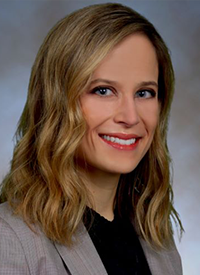Financial Navigation Program May Alleviate Cost Burden Associated With Multiple Myeloma
Utilization of a financial navigation program is feasible for reducing cost burden and improving quality of life in patients with multiple myeloma who are more likely to experience financial toxicity and have difficulty accessing appropriate resources and support services.
Mia Djulbegovic, MD, MS

Utilization of a financial navigation program is feasible for reducing cost burden and improving quality of life (QOL) in patients with multiple myeloma who are more likely to experience financial toxicity and have difficulty accessing appropriate resources and support services, according to patient-reported outcomes data from a randomized, qualitative study presented at the 2023 ASH Annual Meeting.
“On one hand, [patients with multiple myeloma are] living longer, despite having an incurable disease. But on the other hand, this means requiring lifelong and often expensive medical treatments,” study author Mia Djulbegovic, MD, MS., Division of Hematology-Oncology, University of Pennsylvania, Perelman School of Medicine, Philadelphia, said during a presentation of the results.
“Therefore, there remains a critical need to develop and evaluate pathways that not only identify patients who are at risk of financial toxicity, but also connect them to the interventions that can reduce this burden.”
The investigators recruited adult patients with multiple myeloma who were undergoing systemic treatment at the University of Pennsylvania during their follow-up appointments.
In total, 193 patients consented to taking the Comprehensive Score for Financial Toxicity (COST) survey–an 11-item, validated measure of financial toxicity risk. The scores ranged from 0 to 44. Patients also completed a baseline survey to assess socioeconomic and demographic factors, cost-coping behaviors, quality of life, and satisfaction. After 4 months, they completed a similar, final survey.
Patients at risk for financial toxicity (COST score, <26) were randomized 1:1 to receive financial intervention or usual care.
The financial navigation program aimed to proactively identify patients at risk of financial toxicity, comprehensively assesses their needs, systematically connect them to resources, and followed them to ensure needs were being met. As part of the program, nurse navigators assessed financial and transportation barriers to care by telephone. They then performed proactive outreach to financial advocates and social workers, while coordinating resources for the patients. This was then followed by monthly follow-up calls with the patients.
The primary outcomes of the study was change in COST score, while secondary outcomes included cost-coping behaviors, quality of life as measured by the Functional Assessment of Cancer Therapy (FACT-G), and satisfaction as measured by the Patient Satisfaction Questionnaire Short Form (PSQ-18).
In total, 53 patients comprised both arms, with 41 included in the intervention analysis and 42 in the usual care group.
Mean age was 64.8 years, while the majority of patients were female (53%) and 39% were non-White. Further, the majority of patients in the entire cohort finished college (49%; P = 0.35), made less than $60,000 (46%; P = 0.40), and were insured with Medicare (58%; P = 0.24). Lastly, 64% claimed to have used prior financial support services.
After a median follow-up of 4.9 months, 95% participated in the financial navigation program and 68% completed 3 or more follow-up calls. In the usual care group, 17% had received financial support services.
Djulbegovic noted that the financial navigation program improved patients’ understanding of financial support services and reduced stress. “We also found in this study that financial support services focus mostly on medical bills and include a limited evaluation of outpatient drug costs. So this remains an unmet need,” she added.
When looking at patient-reported outcomes, the impact on patients applying for financial assistance was statistically significant with the financial navigation program, vs usual care (23% vs 12%; P = .002).
“We found that a proactive and coordinated financial navigation program, while resource intensive, is efficient and scalable. It demonstrates high retention and leads to an increase in financial assistance applications,” Djulbegovic said.
She acknowledged that the study was limited by its participants, who were English speaking and literate only, and all insured. Further, it was limited because it was survey- and telephone-based, and there were no objective data.
Reference:
Djulbegovic M, Doherty M, Fanslau K, et al. A Randomized Controlled Trial of a Financial Navigation Program for Patients with Multiple Myeloma. Blood. 2023;142(Supplement 1):909. doi:10.1182/blood-2023-174451.
Latest Conference Coverage

Navigating the Intersection of Radiation Therapy and Immunotherapy in Endometrial Cancer

As Orthopedic Oncology Evolves, Caring for the Clinician Must Be a Priority

Belumosudil Produces Long-Term Responses Without New Safety Concerns in cGVHD

Prophylactic Itacitinib May Safely Mitigate CRS Following Axi-Cel Administration in Lymphoma
2 Commerce Drive
Cranbury, NJ 08512